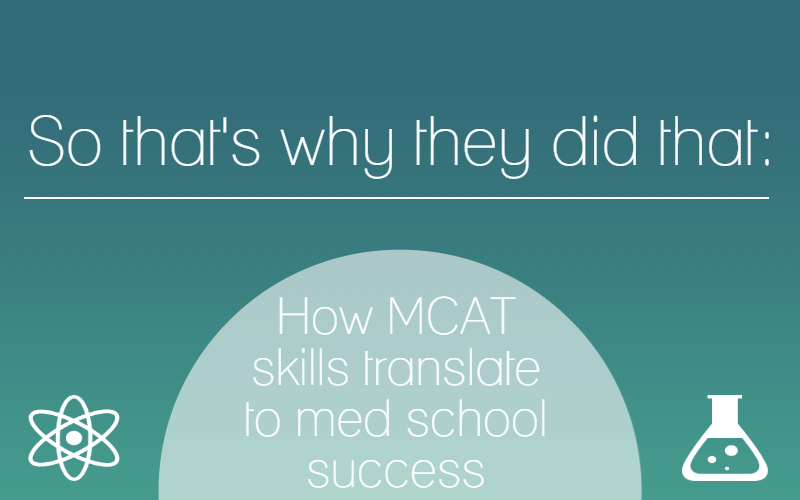Do you ever wonder why the MCAT tests its content the way it does? Many students come into the exam confident in their scientific acumen only to be stymied by the creative format of the AAMC. Therein in lies the mystique of the exam, not in the what, but in the how it tests science. The good news is that there is some pretty solid reasoning behind the process. If we take a look at what the AAMC is touting as the four “official skills” of the 2105 exam, we can actually see how each of those skills will translate into medical school success, practically year by year.
AAMC Skill 1: “Knowledge of scientific concepts and principle.”
Seems simple enough does it not? No matter how clever you are, walking into the test without a solid science base is a recipe for disappointment. Without a foundation in or ability to comprehend a scientific principle, all the reasoning will be for naught. For example, understanding Boyle’s Law (at a constant temperature Pressure x Volume = constant) allow us to better understand the mechanical changes of the lung during the breathing cycle. The MCAT expects you to have this layer of knowledge so that they can get creative with how they test it. This approach is similar to how your medical school will train you as soon as you don that white coat.
When you begin your tenure in medical school as an MS I, a majority of your time is spent attending lectures, dissecting your cadaver, studying and taking notes. So much time is devoted to learning medical science or re-learning concepts to a much greater degree. On average you are going to learn over 100,000 new terms during your basic science years. Think of all the advances in understanding medicine has seen in the last 30 years, yet it’s still just 2 years of classroom based learning. Effectively you are learning the language of medicine and the fundamentals of the body. If you cannot recognize how the body functions, then there is no way to recognize what is wrong with your patient. When you hear wheezing or crepitus while listening to your patient’s lungs (that stethoscope does more than serve as a conversation piece), you can better identify the volume or pressure changes causing the abnormal sound. This mastery of the body’s foundations is what will lead you to the right diagnosis.
This primary is skill is why I have my students start off their prep with a heavy emphasis on content, building a successively more complex understanding to match each of the AAMC chosen skills. The MCAT is a long road, but when you reach medical school there will be times where you will look back and realize there was a logic (diabolical or not I leave to you) to it all.
Stay tuned for part two of this blog where we discuss the second science-based skill claimed by the AAMC.
Written by Blueprint MCAT (formerly Next Step) MCAT experts.
Search the Blog

Free Consultation
Interested in our Online MCAT Course, One-on-One MCAT Tutoring or Med admissions packages? Set up a free consultation with one of our experienced Senior Student Advisors.
Schedule NowPopular Posts
-
MCAT Blog What's on the MCAT?
-
MCAT Blog How to Review MCAT Full Lengths

Free MCAT Practice Account
Need great MCAT practice?Get the most representative MCAT practice possible when you sign up for our free MCAT Account, which includes a half-length diagnostic exam and one of our full-length MCAT practice exams.
Learn More






